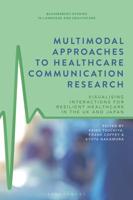Publisher's Synopsis
Speech carries information about the structure and organization of language. Yet, speech is normally produced as a continuous stream without clearly demarcated boundaries between words. A fundamental problem for any language learner is to segment speech in a way that correctly identifies the words of the language. This is a crucial step toward building a lexicon and learning about the grammatical organization of the language.
The Discovery of Spoken Language marks one of the first efforts to integrate the field of infant speech perception research into the general study of language acquisition. It fills in a key part of the acquisition story by providing an extensive review of research on the acquisition of language during the first year of life, focusing primarily on how normally developing infants learn the organization of native language sound patterns.
Peter Jusczyk examines the initial capacities that infants possess for discriminating and categorizing speech sounds and how these capacities evolve as infants gain experience with native language input. Considerable attention is paid to ways speech perception capacities develop so that listeners can recognize words in fluent speech. Jusczyk also looks at how infants' growing knowledge of native language sound patterns may facilitate the acquisition of other aspects of language organization and discusses the relationship between the learner's developing capacities for perceiving and producing speech. An appendix reviews the test procedures used to evaluate infant speech perception capacities.










